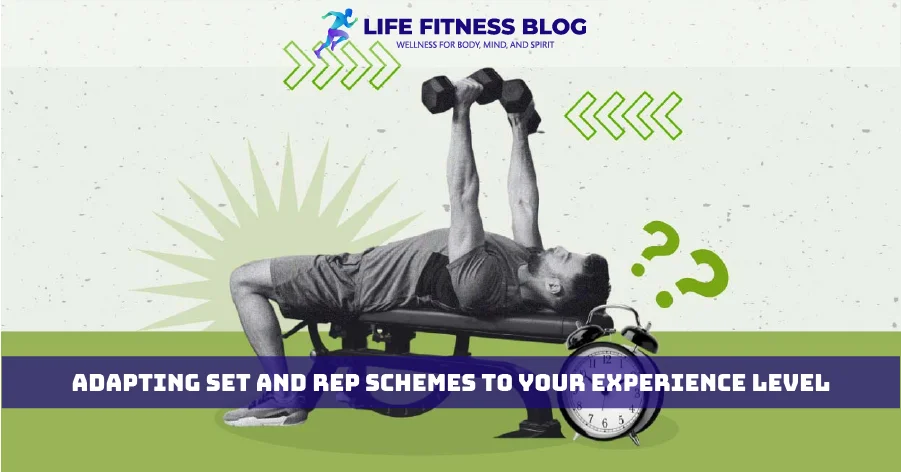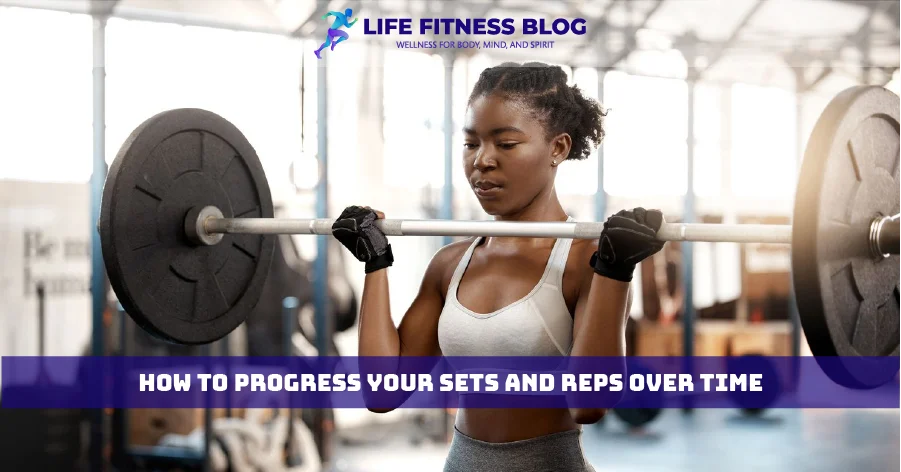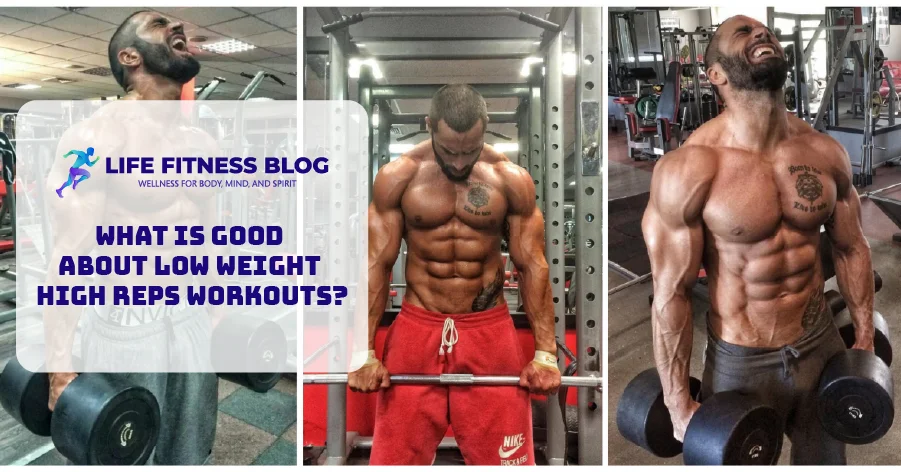Understanding sets and reps is key to effective strength training. Whether you want to build muscle, boost strength, or enhance endurance, the number of sets and reps matters a lot. In this article, we’ll explore the science behind exercise volume and the best rep ranges for different goals. We’ll also share tips on finding the right set and rep schemes for your best results.
Getting the right sets and reps is crucial for your gym goals. Knowing how these variables work together helps you create workouts that match your fitness aims and skill level. Let’s dive into the details of sets and reps, helping you craft a training plan that boosts muscle, strength, and endurance.
Table of Contents
Understanding the Basics of Sets and Reps in Exercise
Getting to know the basics of strength training is key to reaching your fitness goals. At the heart of any good workout are sets and reps. Knowing the difference between these two can help you boost your exercise volume and intensity.
Defining Sets vs. Reps in Strength Training
In strength training, a set is a series of reps done without stopping. For instance, doing 10 bicep curls is one set. The reps are the individual curls in that set. So, 10 curls in a row is 10 reps in one set.
Why Proper Set and Rep Schemes Matter
Choosing the right set and rep schemes is vital for a good strength training plan. The number of sets and reps affects muscle growth, strength, and fitness. The right plan helps you reach specific goals like building strength or gaining muscle.
The Science Behind Exercise Volume
Exercise volume is linked to sets and reps. It’s the total work done in a workout, found by multiplying sets by reps. To reach your fitness goals, it’s important to increase your exercise volume. This lets your body get used to more challenges and build muscle over time.
| Training Goal | Recommended Rep Range | Recommended Set Range |
|---|---|---|
| Strength Building | 1-5 reps | 3-5 sets |
| Muscle Hypertrophy | 8-12 reps | 3-4 sets |
| Endurance Training | 15+ reps | 2-3 sets |
By grasping the basics of sets and reps, you can design a strength training plan that meets your fitness goals.
How Many Sets and Reps Should You Do During Workout
Getting fit depends a lot on how many sets and reps you do. Your exercise volume and workout intensity are key. Knowing how to mix these can help you reach your training goals.
The number of sets and reps changes based on your level, the exercise, and your goals. Beginners start with fewer sets and reps. As they get stronger, they do more. More experienced people need more work to keep improving.
For example, to build muscle mass, doing 8-12 reps per set for 3-4 sets works well. But for strength development, doing 1-5 reps per set for 3-5 sets is better.
Remember, these are just guidelines. Your needs might be different. Think about the exercise, how well you recover, and what you like when choosing your sets and reps.
“The key is to find the right balance between exercise volume and workout intensity to support your specific fitness goals.”
Try different things and listen to your body. This way, you’ll find the best mix for steady progress. Changing your set and rep plans regularly can help you get the best results.

Optimal Rep Ranges for Different Fitness Goals
The number of reps you do in your workout can greatly affect your fitness goals. Whether you want to get stronger, build muscle, or boost endurance, knowing the best rep ranges is key. This helps you get the most out of your workouts.
Building Strength (1-5 reps)
To increase your strength, aim for 1 to 5 reps per set. This method uses heavy weights and fewer reps. It demands more from your muscles, leading to strength gains and muscle growth. It also improves your ability to generate force.
Muscle Hypertrophy (8-12 reps)
For muscle growth or hypertrophy, the best range is 8 to 12 reps per set. This range balances the load and volume. It stimulates muscle growth and adaptation.
Endurance Training (15+ reps)
To boost muscular endurance, use higher rep ranges, like 15 or more per set. This method makes your muscles work longer. It helps them resist fatigue and last longer during activities.
Knowing the right rep ranges for your fitness goals is crucial. It helps you create a workout plan that targets your needs. By choosing the right rep schemes, you can reach your fitness goals faster.
Determining the Right Number of Sets for Maximum Results
The number of sets you do in your workouts is key to reaching your fitness goals. The right amount of exercise volume, or sets and reps, changes based on your workout intensity and fitness level.
To find the best number of sets for you, think about these factors:
- Exercise Type – Compound exercises like squats and deadlifts need more sets than isolation exercises like bicep curls.
- Muscle Group Size – Bigger muscle groups, like the back and legs, usually need more sets to grow.
- Individual Recovery Ability – Your fitness level and how fast you recover will tell you how many sets you can do without overdoing it.
Here’s a table with set ranges for different fitness goals:
| Fitness Goal | Set Range |
|---|---|
| Strength Building | 3-5 sets |
| Muscle Hypertrophy | 4-6 sets |
| Endurance Training | 2-4 sets |
These are just starting points. The best number of sets for you will depend on your fitness level, training experience, and the exercise you’re doing. Try different set volumes to see what works best for your body and goals.
Rest Periods Between Sets and Their Impact on Performance
The length of your rest periods between sets is key to a good workout. Knowing the difference between short and long rest intervals helps you reach your fitness goals. It’s all about finding the right balance for your body.
Short Rest vs. Long Rest Intervals
Short rest periods, from 30 seconds to 2 minutes, boost workout intensity and heart health. They’re great for those who want to improve endurance or lose fat. On the other hand, longer rest times, 3 to 5 minutes, are better for building strength or muscle mass.
Recovery Time Based on Exercise Type
- Compound exercises like squats or deadlifts need 3-5 minutes of rest. This ensures you can perform well on the next set.
- Isolation exercises, like bicep curls or leg extensions, can get by with 1-2 minutes of rest. This is because they work fewer muscles.
Optimizing Rest for Your Goals
Choosing the right rest time depends on your fitness goals. For strength or muscle, longer rest is better. But for heart health or fat loss, shorter rest is the way to go.
“The key is to experiment and find the rest period duration that allows you to consistently perform at your best and make progress toward your training goals.”
Understanding how rest periods, workout intensity, and recovery time work together helps you tailor your workout. This way, you can reach your fitness dreams more effectively.
Adapting Set and Rep Schemes to Your Experience Level
Reaching your fitness goals means finding what works for you. The right number of sets and reps changes with your experience and fitness level. Whether you’re just starting out or have been lifting for years, adjusting your workout can help you see better results and avoid hitting a wall.
For beginners, it’s all about mastering the basics. Start with lighter weights and do more reps, like 12-15 per set. This helps you learn proper form and build strength safely. As you get stronger, you can lift heavier and do fewer reps.
Intermediate lifters need a mix of both. Aim for 8-12 reps per set, doing 3-4 sets for each exercise. This mix keeps your muscles challenged and allows for recovery and growth.
- For advanced lifters, it’s about pushing your limits. Try different rep ranges, from 1-5 for strength to 15-20 for endurance. This helps you meet your training goals.
- Try different exercise selections and fitness levels to find what works best for you and your training goals.
Long-term success comes from listening to your body and adjusting your workout. Always challenge yourself to reach new fitness heights.

Common Mistakes in Set and Rep Programming
Getting the most out of your workouts means paying attention to set and rep details. Many people make mistakes that can stop their progress. These mistakes can lead to overtraining or not getting the results they want. Let’s look at the main errors to avoid in your set and rep plans.
Overtraining Warning Signs
One big mistake is overtraining. This happens when you do too much exercise. Signs you might be overtraining include:
- Persistent fatigue and lack of energy
- Decreased performance and strength gains
- Increased susceptibility to injuries
- Disrupted sleep patterns and mood changes
It’s important to listen to your body and adjust your training. This helps avoid overtraining.
Volume Management Errors
Managing how much exercise you do is another common mistake. Not increasing your exercise volume slowly enough can slow your progress. On the other hand, doing too much can cause burnout and injuries. It’s all about finding the right balance between pushing yourself and resting enough.
Progressive Overload Mistakes
Progressive overload is key in set and rep programming. It means slowly increasing the workout intensity over time. Not doing this can stop your progress. Trying to increase intensity too fast can also cause injuries. Planning your progressive overload carefully is vital for growth.
By knowing these common mistakes and using a smart, evidence-based approach, you can make your workouts more effective. This will help you reach your fitness goals.
How to Progress Your Sets and Reps Over Time
To grow muscles and get stronger, you need a smart plan for your workouts. Progressive overload is key to reaching new heights in strength training and muscle growth. Here’s how to adjust your sets and reps for better results:
- Increase Weight: When you get stronger, slowly add more weight. Keep the same number of sets and reps. This makes your muscles work harder, leading to more strength and size.
- Boost Volume: Adding more sets is a simple way to challenge yourself. Gradually increase the number of sets over time. This helps your muscles grow more.
- Enhance Density: Shorten the rest time between sets. This lets you do more reps in less time. It adds more stress to your muscles, helping them grow.
Progress isn’t always easy. Check your strength and fitness often and adjust your workout plan. With a smart, long-term plan, you’ll keep seeing great gains in strength and muscle growth.

Conclusion
The number of sets and reps in your workouts is key to reaching your fitness goals. Whether you want to build strength, grow muscle, or boost endurance, it matters. Knowing how sets and reps work lets you adjust your workouts to fit your needs and skill level.
Choosing the right set and rep schemes is vital for a good workout. By picking the best rep ranges for your goals and setting the right number of sets, you can make your workouts more effective. Also, how long you rest between sets affects your performance and recovery.
Staying consistent and adapting as you go is crucial. Keep an eye on your progress and tweak your set and rep plans to keep challenging yourself. By following the tips in this article, you’ll be on the path to reaching your fitness goals efficiently.
Also Read:
FAQs
What is the difference between sets and reps in strength training?
Sets are a group of repetitions, while reps are individual repetitions within a set. For example, 3 sets of 10 reps means 10 repetitions, rest, then repeat 2 more times.
How do I determine the optimal rep range for my fitness goal?
To build strength, aim for 1-5 reps per set. For muscle growth, 8-12 reps is ideal. To improve endurance, 15+ reps per set is recommended.
What is the ideal rest time between sets?
Rest time depends on your goal. For strength and muscle growth, longer rest periods (3-5 minutes) are beneficial. For endurance and fat loss, shorter rest periods (30 seconds to 2 minutes) are better.
How do I progress my workouts to continue seeing results?
To progress, gradually increase the weight, reps, or sets over time. This is known as progressive overload. Listen to your body and adjust your workout routine as needed.
What are some common mistakes people make with sets and reps?
Common mistakes include overtraining, not progressing enough, and not adjusting rest periods. It’s important to balance your workouts with adequate rest and nutrition.




